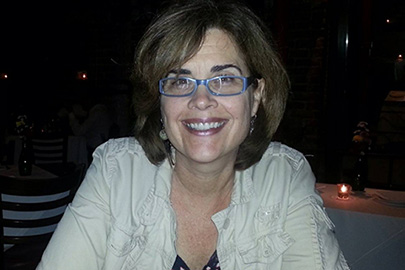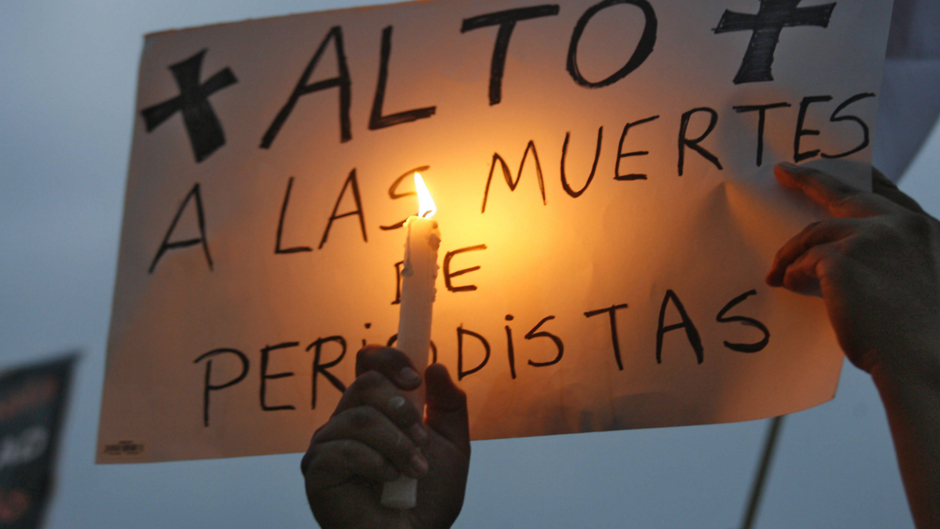Her body was found on the side of a roadway on February 9, 2016—hands and feet bound and a plastic bag over her head.
Only two days earlier, Anabel Flores Salazar, mother of two, had been snatched from her home in the state of Veracruz, Mexico, by armed assailants. Now she was dead. Murdered. And her story was a familiar one: A crime-beat reporter for the newspaper El Sol de Orizaba, Salazar had suffered the same fate of scores of Mexican journalists killed over the past few years for covering news about crime, corruption, and drug cartels in their country.
How has an almost-certain death sentence for simply reporting the truth affected the way Mexican journalists practice their craft?
That is at the heart of a first-of-its-kind study by a University of Miami scholar and research partners in Mexico who spent nearly three years studying the problem.
 |
| Sallie Hughes, Associate Professor, Department of Journalism and Media Management and Latin American Studies Program, School of Communication, University of Miami |
Sallie Hughes, an associate professor in UM’s School of Communication, and her colleagues Mireya Marquéz-Ramírez of the Iberoamerican University in Mexico City and Marco Lara Klahr of the Media and Violence Program of the non-profit Instituto de Justicia Procesal Penal in Mexico City, surveyed nearly 380 Mexican journalists, asking them to report on the types of measures they use to reduce the risk of reprisals and direct threats carried out against them for covering certain types of news stories.
Among their findings: Nearly 68 percent of the journalists surveyed had practiced self-censorship, more than 64 percent abandon street reporting, and over 57 percent adhere to their media organization’s censorship policies. Half (50.3 percent) of the Mexican journalists surveyed reported hiding sensitive information from “suspicious people or untrustworthy colleagues in their own newsrooms,” according to the study.
The study was presented at the UNESCO Conference on Journalist Safety last May in Helsinki, Finland, at the United Nations’ World Press Freedom Day ceremonies, and will appear in a UNESCO book on journalist safety expected next year.
In Mexico, 81 journalists were murdered and 18 disappeared between 2000 and 2014, according to the Mexico City office of the London-based free expression advocate Article 19, with the numbers continuing to increase. Article 19 has also reported that 2016 has been one of the deadliest years for journalists on record. In recent years, media headquarters have been attacked with grenades or gunfire with widespread impunity.
“I have always been impressed and humbled by journalists in Mexico and Latin America and the conditions they work in,” said Hughes, author of Newsrooms in Conflict: Journalism and the Democratization of Mexico. “It’s a vocation, a passion for many of these journalists, but at some point the violence and threats become too much.”
For Marcos Hernández Bautista, his sensitive reporting in Oaxaca that included covering “cacicazgos,” local strongmen who rule parts of the region, came at a high price. The 38-year-old reporter for the daily Noticias, Voz e Imagen de Oaxaca was fatally shot as he climbed into his car last January. His friends told police that he often lived in fear.
The collaborative study by Hughes, Marquéz-Ramírez and Lara Klahr also found that some Mexican journalists, in an attempt to avoid the same fate suffered by Hernández Bautista, publish stories important for their communities anonymously on social media platforms, hoping they will not be tracked down.
Others in states such as Veracruz and Guerrero—two of the worst regions in Mexico because of the prevalence of violent drug cartels and hardline local politicians—report the news by sticking to what official police reports say. And in some instances, journalists do not publish anything at all, according to the study.
Aside from anti-press violence, economic pressures also force journalists to silence critical stories and voices. Journalists who support norms of using their profession to promote social change for the public good feel the pressures the most, according to the study.
Marquéz-Ramírez said the study could spur other researchers to conduct their own investigations and help Mexican journalists determine what changes they need to make to their profession.
"It can help policymakers and civil society organizations to better understand complex phenomena such as the decline of free press and the vulnerability of journalists in some areas,” said Marquéz-Ramírez, who coordinates Programa PRENDE in the Department of Communications at Universidad Iberoamericana Mexico City, an initiative in which local journalists attend a semester of studies in their field. “The general public can have a glimpse into the other side of media content and the world of journalists in Mexico. These are people who face a great deal of pressure and difficulty on a daily basis.”
Mexico is not the only country where journalists are deliberately targeted. So far in 2016, 17 journalists have been murdered worldwide, but many of those killings, points out Hughes, occurred in war-torn countries such as Iraq and Syria. Mexico and some other countries in Latin America, notably Honduras, Brazil and Colombia, stand out, she said, because they are democracies and have a free press that struggles to work autonomously while facing high levels of threat and risk. While the situation has improved somewhat for journalists in Colombia, the danger in Mexico continues unabated. And those who murder journalists in Mexico seem to carry out their deeds with absolute impunity, according to the Committee to Protect Journalists in New York.
Hughes, Marquéz-Ramírez, and Lara Klahr’s collaborative research study took almost three years to conduct, with interviews being conducted in person and via Skype. The researchers compiled a 1200-plus directory of media outlets from across the country and drew a stratified random sample of 130 media outlets. From there 377 journalists were selected systematically and interviewed.
Winning the trust of the journalists took time, but once the study was explained very few declined to participate, said Hughes.
Read this story in Spanish.

